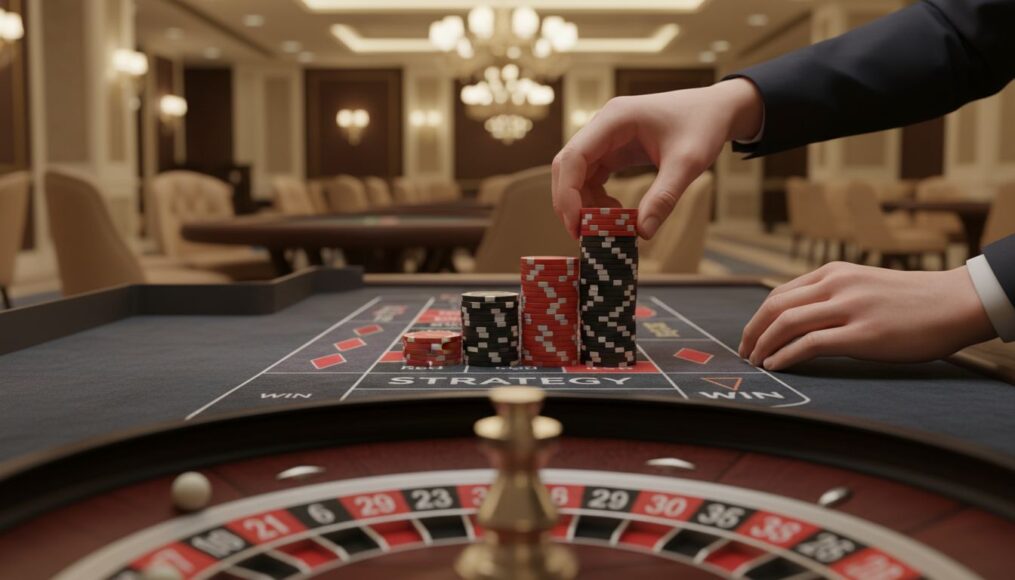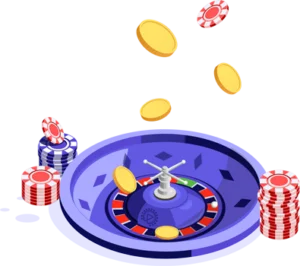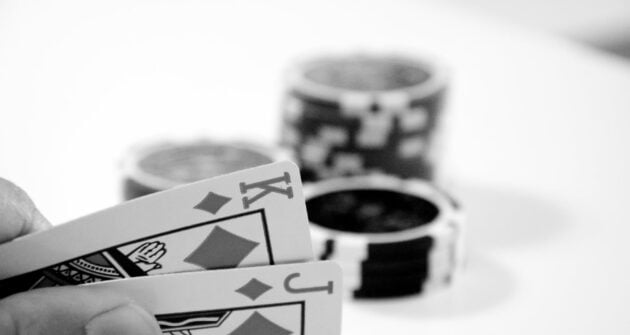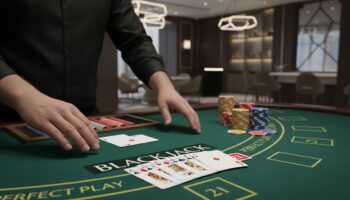A Closer Look at the Reverse Martingale System

Roulette has captivated players for centuries, standing as a timeless icon among casino table games. Beyond the spinning wheel and the thrill of chance, various betting systems have emerged, aiming to give players an edge or at least a structured approach to their wagers. Among the most discussed are the Martingale System and its intriguing counterpart, the Reverse Martingale System. While the former focuses on recovering losses, the latter takes an opposite approach, seeking to amplify winnings during a fortunate streak.
The Reverse Martingale, also known as the Anti-Martingale, is a strategy that sparks considerable debate among gamblers. Some swear by its potential for significant payouts, while others dismiss it as a risky pursuit of an elusive “hot hand.” Let's delve deeper into how this system operates, examining its potential benefits and inherent drawbacks.

How the Reverse Martingale System Works
To understand the Reverse Martingale, it's helpful to briefly recall the standard Martingale. The traditional Martingale system instructs players to double their bet after every loss on even-money wagers (like red/black, odd/even, high/low) with the goal of recouping all previous losses plus a small profit upon a win. Once a win occurs, the player reverts to their original base stake.
The Reverse Martingale flips this logic entirely. Instead of doubling down on losses, you double your bet after every *win*. The core idea is to capitalize on winning streaks. Here’s a step-by-step breakdown:
- Start with a Base Bet: Choose a small, manageable initial stake for an even-money bet (e.g., €10 on red).
- If You Win: Double your previous bet for the next spin. So, if you won with €10, your next bet would be €20. If you win again, your next bet becomes €40, and so on.
- If You Lose: Immediately revert to your original base bet. This is crucial for managing risk and preventing significant losses from your bankroll.
The strategy is designed to ride a “hot streak,” where consecutive wins allow you to rapidly increase your wager using the casino's money (your winnings). However, as soon as a loss occurs, you reset, protecting your initial capital and any profits you might have secured by cashing out earlier.
Pros of the Reverse Martingale System
Potential for Substantial Winnings
The most appealing aspect of the Reverse Martingale is its capacity to generate significant profits during a winning streak. If you hit several consecutive wins, your bets escalate quickly, leading to a substantial payout. For instance, starting with a €10 bet: Win 1 (€10) -> Bet €20; Win 2 (€20) -> Bet €40; Win 3 (€40) -> Bet €80; Win 4 (€80) -> Bet €160. A four-win streak could turn a €10 initial stake into a €150 profit (excluding the initial €10). This rapid accumulation of winnings is what draws many players to the system.
Lower Risk to Your Initial Bankroll
Compared to the standard Martingale, the Reverse Martingale is often perceived as less risky to your personal bankroll. This is because you are primarily increasing your bets with money you've just won from the casino, rather than continually dipping into your own funds to cover losses. If you start with a €10 bet and lose, you only lose that initial €10. If you win a few times and then lose, you lose the accumulated winnings from that streak, but your initial stake is the maximum you risk per series. This makes it a more conservative approach in terms of protecting your core capital.
Simplicity and Ease of Use
Like its counterpart, the Reverse Martingale is incredibly simple to understand and implement. There are no complex calculations or intricate rules. You either double your bet on a win or revert to your base stake on a loss. This straightforward nature makes it accessible even for novice roulette players looking for a structured betting approach.
Cons of the Reverse Martingale System
Reliance on Elusive Winning Streaks
The fundamental flaw of the Reverse Martingale lies in its dependence on winning streaks. In a game of pure chance like roulette, each spin is an independent event. The probability of hitting red or black remains roughly 50/50 (slightly less due to the green zero pocket) regardless of previous outcomes. True “hot streaks” are rare and unpredictable. Waiting for and sustaining a long enough streak to make significant profit can be a frustrating and often fruitless endeavor.
A Single Loss Wipes Out All Accumulated Winnings
This is the biggest drawback. The moment you lose, you forfeit all the winnings accumulated during that particular streak. Imagine you've had a fantastic run, winning four times in a row, turning your €10 into €150 profit. If your fifth bet (of €160) loses, all that profit vanishes, and you're back to your original €10 base bet for the next round. This can be incredibly disheartening and highlights the system's vulnerability to even a single unfavorable outcome.
The House Edge Remains
No betting system, including the Reverse Martingale, can overcome the inherent house edge in roulette. Over the long run, the presence of the green zero (or double zero in American roulette) ensures that the casino will always have a slight advantage. While the Reverse Martingale can help manage your betting patterns, it doesn't alter the underlying probabilities of the game, meaning sustained profitability is statistically unlikely.
Knowing When to Quit is Critical
For the Reverse Martingale to be effective, a player must possess immense discipline and know precisely when to walk away. If you continue to chase longer streaks, the inevitable loss will eventually occur, wiping out all your hard-earned winnings. Setting a profit target and sticking to it is paramount, but this requires a level of self-control that many players find challenging in the heat of the moment.
Conclusion
The Reverse Martingale System offers an exciting, albeit high-risk, approach to playing roulette. It appeals to those who enjoy the thrill of chasing big wins during a lucky run and appreciate a strategy that primarily risks accumulated winnings rather than their core bankroll. However, its success hinges entirely on the unpredictable nature of winning streaks, and a single loss can quickly erase all progress.
Like all betting systems, the Reverse Martingale should be viewed as a tool for managing your bets, not a guaranteed path to profit. It's crucial to approach it with a clear understanding of its limitations, practice responsible gambling, and remember that roulette remains a game of chance where the house always holds an edge. Whether you're exploring online casino games or traditional tables, always play within your means and for entertainment.
Most Recent News
Get the latest information








